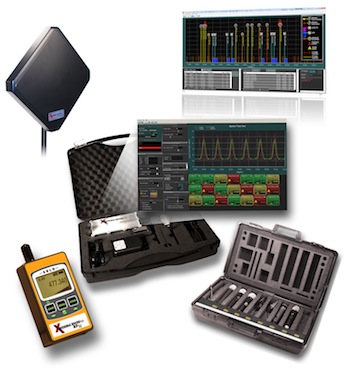In my last post, “It's Time to Move Videoconferencing to the Cloud,” I focused on what, to me, is a no-brainer: the AV industry needs to shed expensive, cumbersome, and proprietary videoconferencing solutions in favor of desktop conferencing capabilities with a centralized cloud interface. In a number of conversations I’ve had since that post, technology managers and users alike have expressed what a great idea that would be, but they’re just not sure where to start when it comes to transitioning legacy videoconferencing systems, or where to begin when it comes to initiating conferencing policies from scratch.
Here are a few easy steps that will allow your organization to be “cloud-ready,” and begin the process of migrating legacy strategies or create a first-time videoconferencing strategy.
Legacy or Proprietary Systems
So you’ve got a building full of legacy, or even current, proprietary videoconferencing systems, stacks, and stacks of codecs and cameras that only work with those codecs; it’s ok. It’s now easier than ever to connect proprietary systems with other systems thanks to interoperability providers. An executive in one office can step into their Cisco/Tandberg conferencing facility and connect with a remote employee using a host of desktop conferencing applications, or with other proprietary systems. This is incredibly useful for all organizations, but provides the best value for organizations which might need to conference and collaborate with similar organizations that might not have the same technology, for instance, connecting professors from two different universities together to work on a research experiment, paper, or presentation.
Cloud providers can be somewhat pricy, but for an organization which already has a videoconferencing strategy in place, altering it to include desktop conferencing or even mobile conferencing can be absolutely worth it. Cloud providers allow organizations to be more agile and flexible in their approach to conferencing and can easily pay for themselves in increased efficiency and lowering the cost of future videoconferencing installations.
New to Conferencing
For organizations that currently don’t use videoconferencing, or are using a consumer based video conferencing solution as part of their strategy, stop it! It’s time to grow up. There are a number of videoconferencing options available that are desktop- and mobile-driven, allowing users to connect regardless of hardware or location.
The obvious goal would be to maximize existing software and licensing to keep costs low. One way to accomplish this would be to truly unify communications. Having a separate provider for telephony, email, and conferencing is inefficient, both operationally and financially. Even combining just email and conferencing, through Google Apps including mail and Hangouts, allows users to easily connect with colleagues in a fraction of a second.
Another option, one I’m more familiar with, is using Microsoft for all communications. At my previous stop, we used Microsoft Exchange (email) and Microsoft Lync (Phone, Chat, Conferencing). It was nice to be able to take advantage of a full communication suite; to what degree we actually took advantage of the existing infrastructure, though, left much to be desired.
There are a number of quality products available from a surfeit of manufacturers designed to boost utilization of existing resources. These products run the gamut from fully integrated presentation stations designed to work with Microsoft Lync (e.g., Crestron RL, SMART Room System) to several manufacturers designing systems and cameras or audio products that interface with any device to provide professional quality conferencing inputs for BYOD scenarios. (I happen to work for one of these companies, so to avoid appearing biased I will not mention any of these products by name.)
As I mentioned in the last post, the time is now to move conferencing from a specialized facility complete with costly and cumbersome proprietary technology to the cloud and to users’ desktop workstations. There is an abundance of desktop conferencing software available that is able to integrate with professional grade, proprietary systems through cloud providers. There is also a large number of professional grade products for video and audio conferencing designed to work with consumer applications to provide maximum flexibility and maximum ROI for all organizations.
Mike Brandes is an Applications Engineer for an AV manufacturer. Follow him on Twitter @MikeBradesAV or his personal blogmikebrandesav.com.
